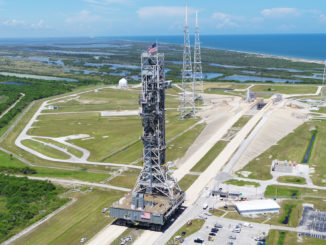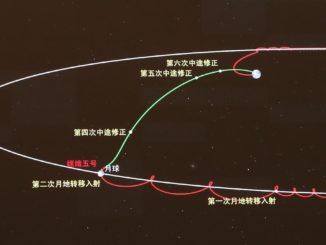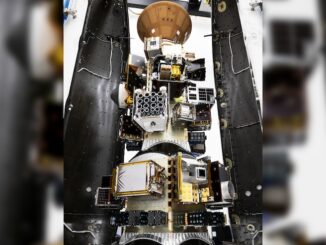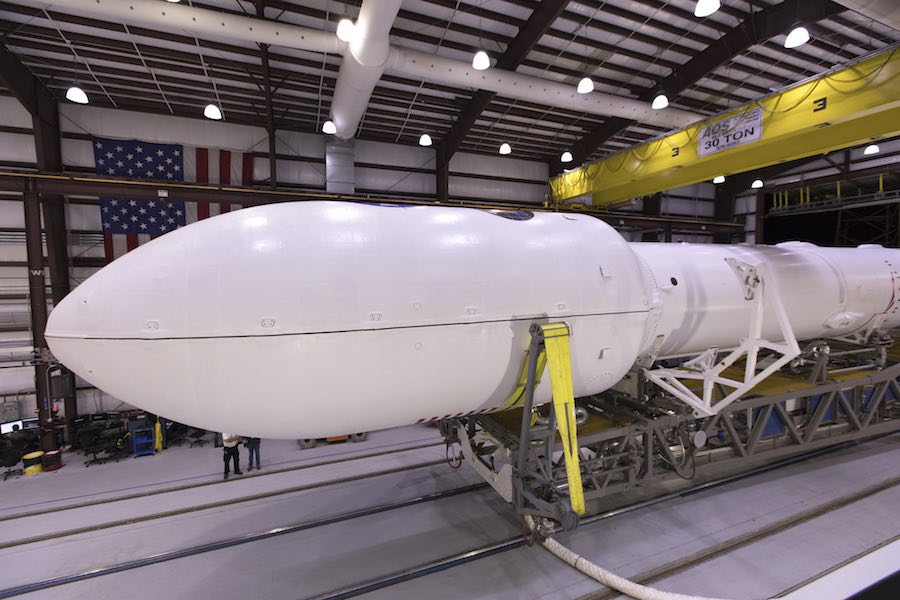
SpaceX has filed a protest challenging a nearly $150 million NASA contract awarded to United Launch Alliance last month to send a robotic asteroid probe into space.
The protest submitted to the Government Accountability Office on Feb. 11 questions a launch contract for NASA’s Lucy science mission to United Launch Alliance. NASA announced Jan. 31 that ULA won the launch contract for the Lucy mission, set for liftoff in October 2021 from Cape Canaveral aboard ULA’s Atlas 5 rocket.
SpaceX said in a statement that it could launch the Lucy mission for less than the $148.3 million awarded to ULA, a 50-50 joint venture between aerospace giants Boeing and Lockheed Martin.
“Since SpaceX has started launching missions for NASA, this is the first time the company has challenged one of the agency’s award decisions,” a SpaceX spokesperson said in a statement. “SpaceX offered a solution with extraordinarily high confidence of mission success at a price dramatically lower than the award amount, so we believe the decision to pay vastly more to Boeing and Lockheed for the same mission was therefore not in the best interest of the agency or the American taxpayers.”
NASA confirmed the protest, saying that the agency issued a stop work order on the Lucy mission after SpaceX’s filing with the GAO. In response to an inquiry from Spaceflight Now, a NASA spokesperson later clarified that the stop work order impacts only the Lucy launch contract, not other work on the mission, which features a spacecraft built by Lockheed Martin and a science team managed by Hal Levison, a researcher based at the Southwest Research Institute in Boulder, Colorado.
In a statement announcing the launch contract last month, ULA said NASA selected the Atlas 5 rocket for the Lucy mission after a “competitive launch service task order evaluation” by the space agency’s Launch Services Program. ULA’s Atlas 5 and Delta 4 rockets are certified to launch NASA’s robotic interplanetary science missions, alongside SpaceX’s Falcon 9 launcher. Both companies are expected to submit bids for each task order competition managed the Launch Services Program.
NASA selected ULA’s Atlas 5 variant without any solid rocket boosters — known as the “401” vehicle configuration — for the Lucy mission. SpaceX’s Falcon 9 rocket also has the lift capability to send the Lucy spacecraft on its interplanetary trajectory, assuming the Falcon 9 dedicates all of its propellant to the launch, leaving no fuel reserve for landing the first stage on land or at sea.
Lucy will encounter seven asteroids during its 12-year mission, beginning with a main belt asteroid, then proceeding through swarms of small objects that lead and trail Jupiter in its orbit around the sun. Lucy will be the first mission to visit this family of asteroids, called Trojans, locked in Jupiter-type orbits.
Scientists believe the Trojan asteroids represent a diverse sample of the types of small planetary building blocks that populated the solar system after its formation 4.5 billion years ago. Read our earlier story for details on the mission’s scientific objectives.
The Lucy spacecraft is expected to weigh no more than 3,163 pounds (1,435 kilograms) at launch, with fuel loaded, according to Levison, the chief scientist on the mission.
“ULA entered into an open competition for NASA’s Lucy spacecraft and was honored to be awarded this important science mission,” the company said in a statement. “This interplanetary mission has an extremely narrow launch window in order to reach all of the desired planetary bodies and accomplish the science objectives. If Lucy misses this launch window, the full mission cannot be accomplished for decades.”
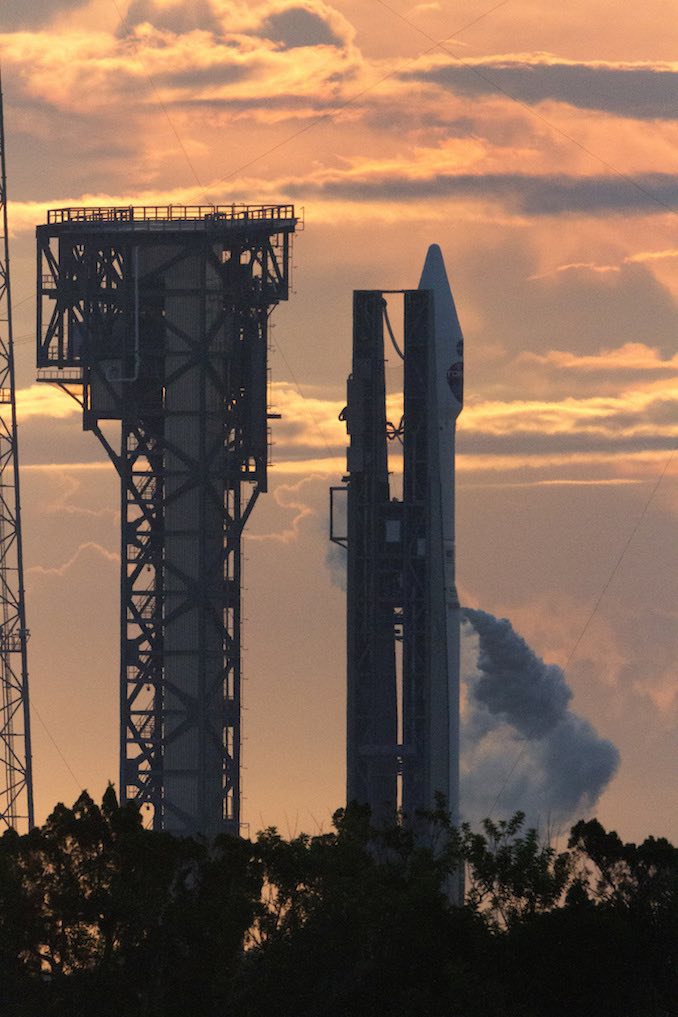
ULA touted its record of “schedule certainty” when officials announced the Lucy launch contract last month, highlighting the Atlas 5’s record of launching on time, or at least close to its original launch date.
“We could not be more pleased that NASA has selected ULA to launch this amazing planetary science mission,” said Tory Bruno, ULA’s president and chief executive officer, in a Jan. 31 statement. “This mission has a once-in-a-lifetime planetary launch window, and Atlas 5’s world-leading schedule certainty, coupled with our reliability and performance provided the optimal vehicle for this mission.”
The Lucy launch window opens Oct. 16, 2021, and extends approximately 20 days. The launch will put Lucy into a heliocentric orbit around the sun, and the probe will return to Earth’s vicinity one year after its liftoff — in October 2022 — to use the planet’s gravity to slingshot toward the outer solar system.
A fortuitous alignment of Lucy’s asteroid targets will allow the mission to visit seven objects — including one binary asteroid — through 2033, giving scientists access to a wide array of Trojan asteroids, believed to be icy relics left over from the formation of the planets.
“The orbits of the Lucy targets are literally aligning in order to make the mission work,” Levison said. “There is, therefore, a unique trajectory for the spacecraft, and thus a very specific launch period. It is possible for us to launch roughly a year later during what would have been the first (Earth gravity assist) in our nominal trajectory.
“While this would preserve our target list because we are launching onto the same trajectory, it is less than optimal for several reasons,” Levison said.
If the liftoff slipped to 2022, a more powerful launcher would be required to give Lucy the boost it needed to make up for the speed imparted during the Earth gravity assist maneuver, according to Levison.
NASA said it is “always cognizant of its mission schedule,” but a spokesperson declined to comment further on pending litigation.
The Government Accountability Office has until May 22 to rule on SpaceX’s contract protest.
According to the GAO’s own statistics, the office sustained 15 percent of contract protests in fiscal year 2018. In such a case, the GAO says it recommends corrective actions to federal agencies to resolve the concerns of the protest. The recommended corrective actions may include the termination of a contract, a new solicitation or competition for the contract in question, and reimbursement of the protester’s costs to file the challenge with the GAO and prepare its original contract bid.
Email the author.
Follow Stephen Clark on Twitter: @StephenClark1.

